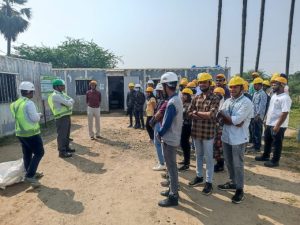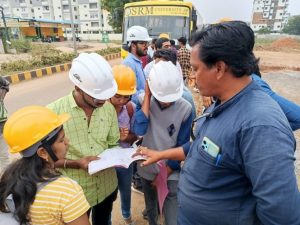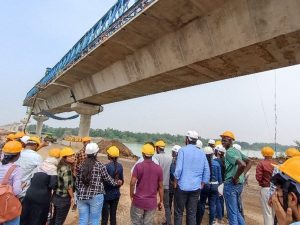Recent News
- Industry Visit for Hands-on Exposure December 27, 2022
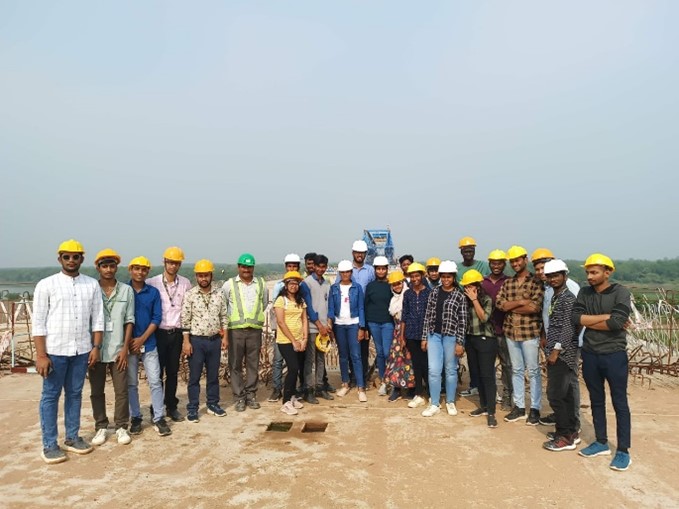
The Department of Civil Engineering of SRM University-AP conducted the second industrial visit for the Civil Engineering students of all semesters on November 30, 2022.
Details of the industrial site
An 18-kilometre stretch bridge over the Krishna River in the Chinakakani-Gollapudi highway is under construction jointly by the Adani group and Navayuga Engineering Company Limited. Hands-on practical insight was provided by experienced site Engineers on the topic of the post-tensioned precast bridge and the launching arrangement of each precast segment using advanced technological equipment. Students were also exposed to the different units of the site (i.e., the Safety class was delivered by the site officials, the Concrete batching plant, Quality control laboratories, and the Casting yard of the precast units).
Coordinating faculty: Dr Nishant Sharma and Dr Arijit Saha
Continue reading → - Employing Information Entropy in Determining the Water Body’s Health Status December 26, 2022
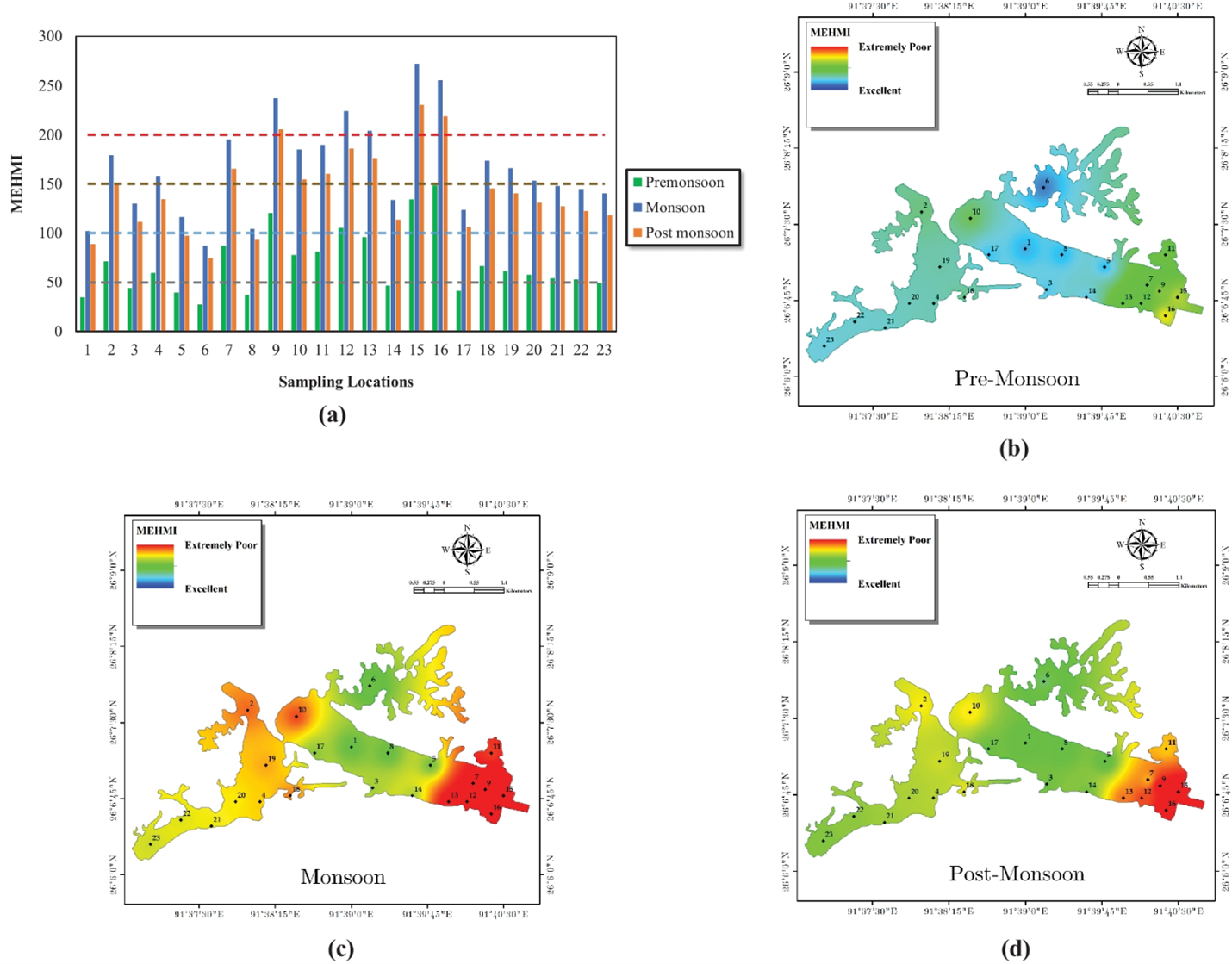 The global population is changing drastically, increasing at an alarming rate of more than 80 million per year. This growing population has led to enormous pressure on land-use patterns and, to a greater extent, the natural ecosystems, especially water bodies. The water bodies are getting depleted considerably, and their quality is significantly deteriorating. Assistant Professor Dr Siddhanth Dash from the Department of Civil Engineering has published the paper Development of function-specific indices for assessing water quality based on the proposed modifications of the expected conflicts on existing information entropy weights in the journal Environmental Monitoring and Assessment with an impact factor of 3.307. He has collaborated with Dr Ajay S Kalamdhad, a Professor at the Department of Civil Engineering, IIT Guwahati, for the research.
The global population is changing drastically, increasing at an alarming rate of more than 80 million per year. This growing population has led to enormous pressure on land-use patterns and, to a greater extent, the natural ecosystems, especially water bodies. The water bodies are getting depleted considerably, and their quality is significantly deteriorating. Assistant Professor Dr Siddhanth Dash from the Department of Civil Engineering has published the paper Development of function-specific indices for assessing water quality based on the proposed modifications of the expected conflicts on existing information entropy weights in the journal Environmental Monitoring and Assessment with an impact factor of 3.307. He has collaborated with Dr Ajay S Kalamdhad, a Professor at the Department of Civil Engineering, IIT Guwahati, for the research.Explanation in Layperson’s Terms
Waterbody contamination is attributed to a various number of reasons: primarily anthropogenic contamination, such as extensive industrial (small as well as large-scale) discharges, leaching of chemical fertilisers from the agricultural grounds, the release of toxic chemicals such as heavy metals and pesticides, and discharge of untreated sewage water from residential complexes (primary constituents being nutrients such as N, P, and K and pathogens). These depletions of the natural water systems have affected the entire aquatic ecosystem. Indexing tools have proved to be the most significant of all the techniques developed. Water quality indices (WQIs) are mathematical representations of a particular body’s water quality, providing a singular numeric denomination reflecting its health status. Specific indices are unique indices which provide information regarding the overall anthropogenic contamination and are broadly target-specific. Over the years and extensive studies carried out worldwide, while multivariate statistics have proved its reliability, the existing approach of using entropy weights suffers from various ambiguities.
Dr Dash’s study addresses vital issues relating to the existing use of entropy weights in WQIs, thus proposing a novel approach to employing information entropy in determining the water body’s health status.
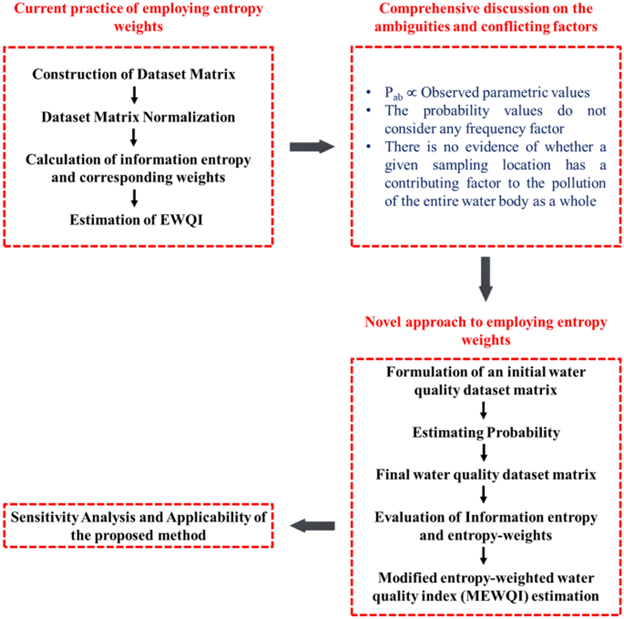 Practical Implementation and Social Implication of the Research
Practical Implementation and Social Implication of the ResearchWater quality assessment remains paramount when providing safe and potable water as per the United Nations Sustainable Development Goals (SDGs). This study’s results would pave the way for a more reliable and time-conserving manner of assessing water quality and a broader context and health status of a water body that will help protect and preserve different water bodies globally. The present study will also benefit the researchers and policymakers in making sustainable decisions toward restoring water bodies and preventing them from plausible future deterioration.
Working on sustainable and effective treatment techniques to remediate emerging contaminants in aquatic ecosystems is the future research plan of Dr Dash.
Abstract
Water serves numerous purposes besides drinking, such as irrigation and industrial usage. Most water quality indices developed have primarily focused on drinking water quality. However, assessing other functionalities of water bodies is also equally essential. The present study proposes a novel technique to measure water quality for two highly specific water use, i.e., assessing heavy metal contamination and irrigation suitability. The ambiguities in the current practice of entropy weights were identified, and a novel method was proposed, considering a three-dimensional approach instead of the conventional two-dimensional procedure. Weights to different parameters were assigned based on the probability estimates obtained from the frequency of observed values within acceptable limits. The proposed method’s reliability, correctness, and applicability were tested using Deepor Beel’s water quality dataset. Results were highly consistent with the experimental values and correlated well with other established methods. The efficacy of the method was determined by employing sensitivity analyses. Both indices showed high reliability and correctness, as no single parameter was found to be highly sensitive compared to others. Therefore, the proposed methodology proved to be the most reasonable, incorporating all the factors required for a reliable water quality monitoring program.
Citation of the Article
Dash, S., & Kalamdhad, A. S. (2022). Development of function-specific indices for assessing water quality based on the proposed modifications of the expected conflicts on existing information entropy weights. Environmental Monitoring and Assessment, 194(12), 1-17.
Continue reading →


